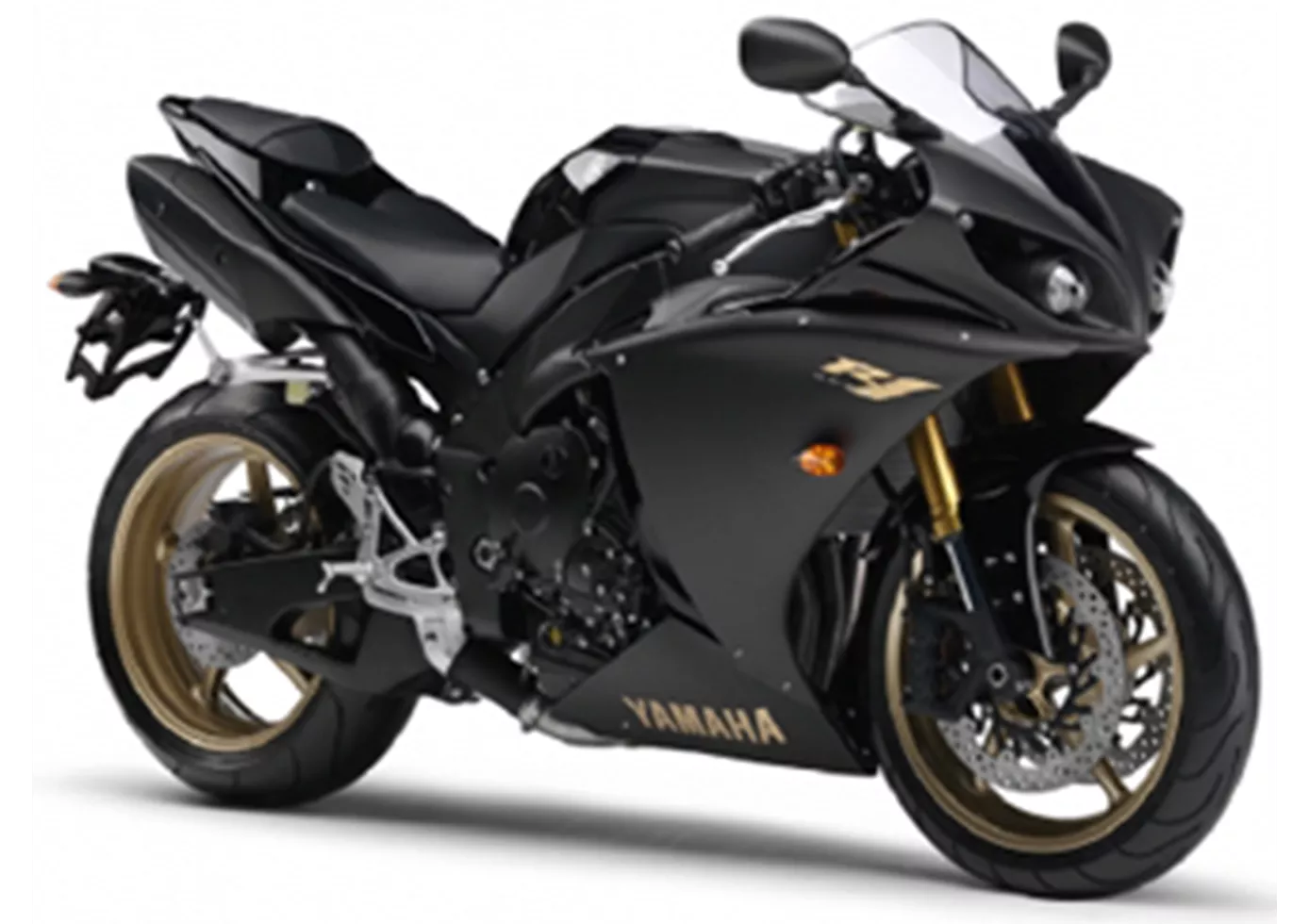BMW S 1000 RR 2011 vs. Yamaha R1 2010

BMW S 1000 RR 2011

Yamaha R1 2010
Pregled - BMW S 1000 RR 2011 vs Yamaha R1 2010
The BMW S 1000 RR 2011 and the Yamaha R1 2010 are both highly regarded supersport motorcycles, but they have distinct differences in their technical specifications and performance.
Starting with the engine and drive train, the BMW S 1000 RR 2011 boasts a larger bore of 80 mm compared to the Yamaha R1 2010's 78 mm. This larger bore allows for more air and fuel to be combusted, resulting in improved power output. The BMW S 1000 RR also has a longer stroke of 49.7 mm compared to the Yamaha R1's 52.2 mm stroke. A longer stroke generally leads to better torque delivery, which is evident in the BMW's higher torque rating of 112 Nm compared to the Yamaha's 115.5 Nm. In terms of engine power, the BMW S 1000 RR takes the lead with 192 HP, while the Yamaha R1 falls slightly behind with 181 HP. Both motorcycles have 4 cylinders and a displacement of around 1000ccm.
Moving on to the suspension, the BMW S 1000 RR 2011 features a telescopic fork front suspension, which provides stability and precise handling. On the other hand, the Yamaha R1 2010 is equipped with an upside-down telescopic fork front suspension, which offers enhanced damping and responsiveness. While both suspensions are effective, the Yamaha R1's upside-down telescopic fork may provide a slight advantage in terms of performance.

BMW S 1000 RR 2011
In terms of chassis, both motorcycles have an aluminum frame, which provides strength and rigidity. However, the BMW S 1000 RR has a twin-tube frame type, while the Yamaha R1 has a Deltabox frame type. The twin-tube frame of the BMW S 1000 RR offers excellent stability and balance, while the Deltabox frame of the Yamaha R1 provides a lightweight and compact design.
When it comes to braking, both motorcycles are equipped with double disk front brakes, ensuring reliable and efficient stopping power. The braking system of the Yamaha R1 is considered optimal, providing excellent performance and feedback. The BMW S 1000 RR's braking system is also highly functional, but no specific strengths or weaknesses are mentioned.
In terms of dimensions and weights, the BMW S 1000 RR has a slightly longer wheelbase of 1432 mm compared to the Yamaha R1's 1415 mm. The seat height of the BMW S 1000 RR is slightly lower at 820 mm, while the Yamaha R1 has a seat height of 835 mm. The kerb weight of the BMW S 1000 RR is 204 kg, slightly lighter than the Yamaha R1's 206 kg. Both motorcycles have similar front and rear tire widths and fuel tank capacities.

Yamaha R1 2010
In terms of strengths, the BMW S 1000 RR 2011 is praised for its improved driveability, optimised torque curve, plenty of power, strong engine, good traction point, and immaculately functioning shift assist. On the other hand, the Yamaha R1 2010 is commended for its strong engine, sophisticated engine character, optimal braking system, and comfortable seating position.
In terms of weaknesses, the BMW S 1000 RR is mentioned to have a fatiguing accelerating load, although no specific details are provided. The Yamaha R1 is noted to have suboptimal suspension elements, low peak power, slightly weak traction, and high weight.
In conclusion, the BMW S 1000 RR 2011 and the Yamaha R1 2010 are both high-performance supersport motorcycles with their own strengths and weaknesses. The BMW S 1000 RR offers improved driveability and a strong engine, while the Yamaha R1 provides a sophisticated engine character and optimal braking system. Ultimately, the choice between the two will depend on the rider's preferences and priorities.
Tehnične specifikacije BMW S 1000 RR 2011 v primerjavi z Yamaha R1 2010
Primerjava prednosti in slabosti
Primerjava prednosti in slabosti
BMW S 1000 RR 2011

The most important changes to the S 1000 RR, however, were the numerous small adjustments to the chassis and geometry. Here we now benefit from thousands of test kilometres from the BMW test crew. This is logical evolution and a great step forward.
Yamaha R1 2010

The current engine in the R1 scores points above all with its unmistakable sound, very transparent response and linear power delivery. In terms of peak power, however, Yamaha had to cut back a little.
Primerjava povprečnih tržnih cen BMW S 1000 RR vs Yamaha R1
There are a few key differences between a BMW S 1000 RR 2011 and a Yamaha R1 2010. In terms of price, the actual average price of a Yamaha R1 2010 is about 4% higher. There are the same number of bikes of both models available on the 1000PS.de marketplace, specifically 5. It takes less time to sell a BMW S 1000 RR with 47 days compared to 53 days for a Yamaha R1. Since model year 2010 1000PS.de editors have written 135 reviews for the BMW S 1000 RR and 80 reviews for the Yamaha R1 since model year 2005. The first review for the BMW S 1000 RR was published on 4/16/2008 and now has more than 4,000 views. This compares to more than 3,900 views for the first review on Yamaha R1 published on 4/28/2003.




















